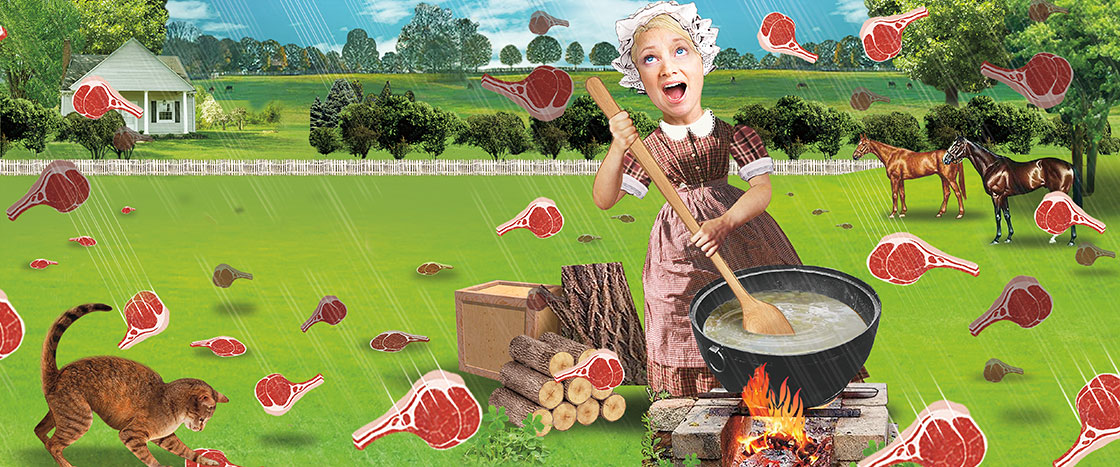Jim McMahon
The meat fell from the sky in Kentucky.
It was March 3, 1876, almost 150 years ago. The day was cool and clear. There wasn’t a cloud in the sky.
A woman named Mary Crouch stood in her yard. She was making homemade soap. Back then, many people made soap themselves.
Suddenly, something strange began to fall from the sky. Mary thought it looked a bit like snow. But it wasn’t cold enough for snow.
It wasn’t hail or rain either. What was happening? Mary looked up.
It was meat.
Chunks of meat were dropping from the sky.
It was March 3, 1876. The day was cool and clear. There wasn’t a cloud in the sky.
A woman named Mary Crouch stood in her yard. She was making homemade soap. Long ago, people made soap themselves.
Something strange began to fall from the sky. Mary thought it looked like snow. But it wasn’t cold.
What was happening? Mary looked up.
It was meat.
Chunks of meat were falling from the sky.
Almost 150 years ago, on March 3, 1876, the day was cool and clear. There wasn’t a cloud in the sky as a woman named Mary Crouch stood in her yard making homemade soap. Long ago, people made soap themselves.
Suddenly, something strange began to fall from the sky. Mary thought it looked a bit like snow, but it wasn’t cold enough for snow.
It wasn’t hail or rain either. What was happening? Mary looked up.
It was meat.
Chunks of meat were falling from the sky.

